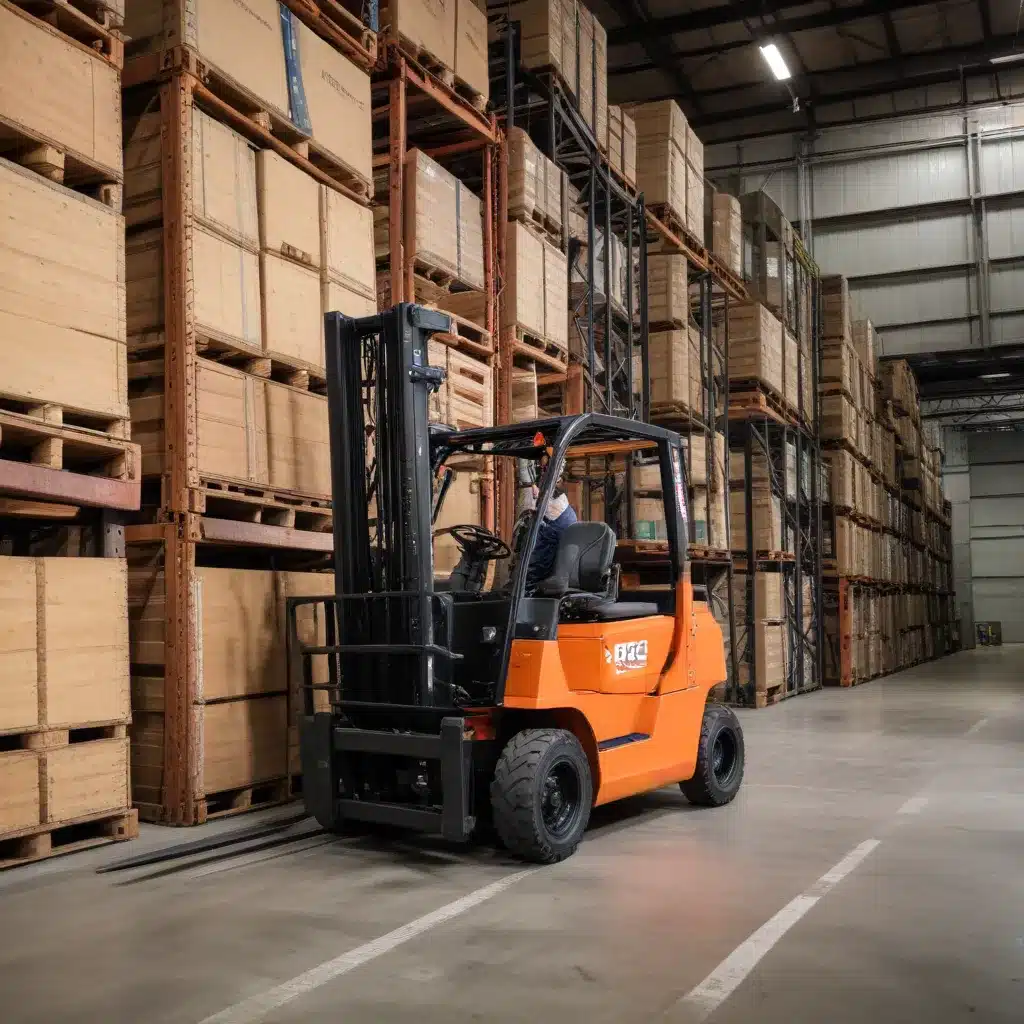
The Forklift Leasing vs. Buying Debate: Considering the Role of Government Incentives and Regulatory Compliance
The Forklift Leasing vs. Buying Debate: Considering the Role of Government Incentives and Regulatory Compliance
As a seasoned industry expert in forklifts, warehousing, and logistics, I’ve witnessed firsthand the ongoing debate between leasing and buying forklift equipment. This decision can have a significant impact on a business’s bottom line, operational efficiency, and regulatory compliance. In this comprehensive article, we’ll dive deep into the key considerations, government incentives, and compliance factors that should guide your forklift acquisition strategy.
Understanding the Forklift Leasing vs. Buying Landscape
When it comes to acquiring forklifts, businesses have two primary options: leasing or outright purchasing. Each approach offers distinct advantages and drawbacks that must be carefully weighed.
Leasing Forklifts:
Pros:
– Lower upfront costs: Leasing typically requires a smaller initial investment compared to purchasing, making it an attractive option for businesses with limited capital.
– Flexible terms: Lease agreements can be tailored to match your business’s needs, allowing for shorter or longer contract periods, equipment upgrades, and more.
– Predictable expenses: Lease payments are fixed, enabling better budgeting and cash flow management.
– Shifting ownership risks: The leasing company bears the responsibility for maintenance, repairs, and eventual disposal of the equipment.
Cons:
– Ongoing payments: Leasing leads to perpetual monthly or quarterly expenses, which can add up over time.
– Potential for higher long-term costs: Depending on the lease terms and the forklift’s lifespan, leasing may result in higher total costs compared to purchasing outright.
– Limitations on customization: Lessees may have less flexibility to modify or customize the forklift to meet specific operational requirements.
Buying Forklifts:
Pros:
– Long-term ownership: Purchasing a forklift outright grants you full control and ownership of the asset, which can be beneficial for businesses with predictable long-term needs.
– Potential for resale value: Well-maintained forklifts can often be resold, potentially recouping a portion of the initial investment.
– Customization opportunities: Businesses can tailor forklifts to their precise requirements, including specialized attachments or modifications.
Cons:
– Higher upfront costs: The initial purchase price of a forklift can be a significant financial burden, especially for small or medium-sized businesses.
– Responsibility for maintenance and repairs: Owners must bear the costs and logistics of maintaining the forklift over its lifespan.
– Potential for technological obsolescence: Purchased forklifts may become outdated more quickly compared to leased equipment, which can be upgraded or replaced more easily.
Exploring Government Incentives and Regulatory Compliance
The forklift acquisition decision is further complicated by the evolving landscape of government incentives and regulatory requirements. Understanding these factors can help businesses make more informed choices and ensure long-term compliance.
Government Incentives for Forklift Acquisitions
Governments at the federal, state, and local levels often offer various incentives and subsidies to encourage businesses to adopt cleaner, more energy-efficient equipment, including forklifts. These incentives can take the form of tax credits, rebates, or direct funding, and they can significantly impact the overall cost of forklift ownership.
One notable example is the California Air Resources Board’s (CARB) “Zero-Emission Forklift Regulation,” which aims to reduce emissions from forklifts operating in the state. The CARB regulation provides financial incentives for businesses to transition to zero-emission forklifts, potentially offsetting the higher upfront costs associated with purchasing these advanced models.
Similarly, the federal government offers tax credits and deductions for businesses that invest in energy-efficient equipment, including forklifts. The Sustainability.gov website outlines various federal incentives and programs that can help offset the costs of forklift acquisitions.
Regulatory Compliance Considerations
In addition to government incentives, businesses must also consider the regulatory landscape when making forklift acquisition decisions. Regulations such as OSHA’s forklift safety standards, the EEOC’s guidelines on religious discrimination, and CARB’s emission control requirements can have a significant impact on the types of forklifts that can be used, the training required for operators, and the overall compliance efforts.
Leasing forklifts can often simplify the compliance process, as the leasing company may assume responsibility for ensuring the equipment meets all necessary safety and environmental standards. Conversely, purchasing forklifts may require more hands-on management to maintain compliance throughout the asset’s lifespan.
Balancing Cost, Flexibility, and Compliance
When evaluating the forklift leasing vs. buying decision, businesses must carefully weigh the various factors to determine the optimal solution for their unique operational needs and financial constraints.
Cost Considerations:
– Analyze the total cost of ownership, including upfront expenses, ongoing maintenance, and eventual disposal or resale value.
– Explore government incentives and tax benefits that can offset the costs of forklift acquisitions.
– Consider the impact of leasing or purchasing on your business’s cash flow and budgeting.
Operational Flexibility:
– Assess your business’s need for adaptability, including the potential for equipment upgrades or changes in forklift requirements over time.
– Evaluate the ease of transitioning to newer, more efficient models under a leasing arrangement versus the longer-term commitment of ownership.
– Determine the level of customization required to meet your specific operational needs.
Regulatory Compliance:
– Ensure that your forklift acquisition strategy aligns with all relevant safety standards, emissions regulations, and other compliance requirements.
– Understand the responsibilities and potential liabilities associated with owning versus leasing forklifts, and how that impacts your compliance efforts.
– Seek guidance from industry experts, regulatory bodies, and legal counsel to ensure your forklift fleet is compliant and up-to-date.
By carefully considering these factors, businesses can make informed decisions that optimize their forklift fleet, maximize cost savings, and maintain regulatory compliance. Ultimately, the choice between leasing and buying forklifts should be based on a thorough analysis of your organization’s unique needs, financial resources, and long-term strategic objectives.
For more expert insights and practical tips on forklift reviews, safety guidelines, maintenance, and industry trends, be sure to visit Forklift Reviews. Our team of seasoned professionals is dedicated to providing valuable information to help businesses like yours navigate the ever-evolving world of material handling equipment.

